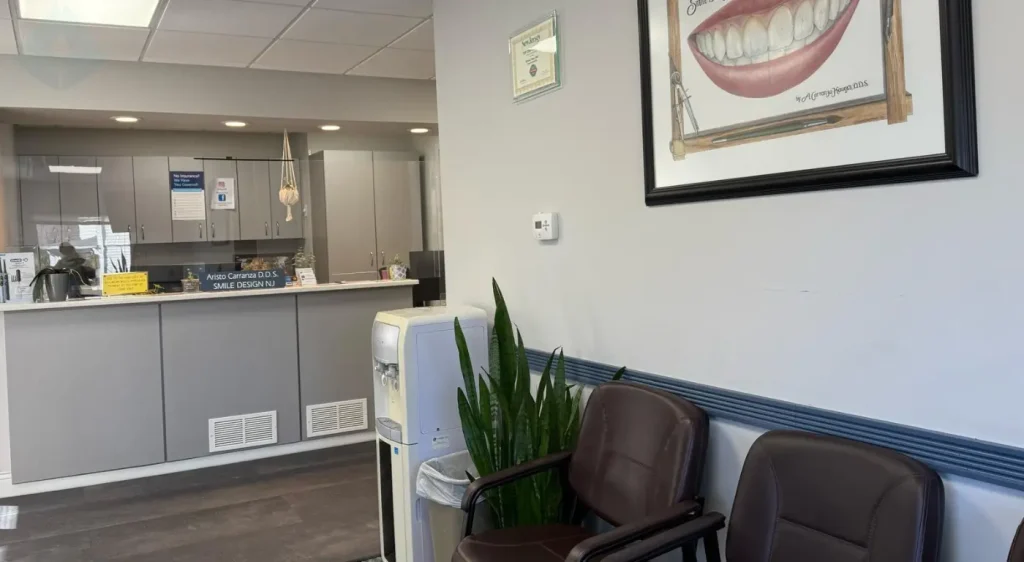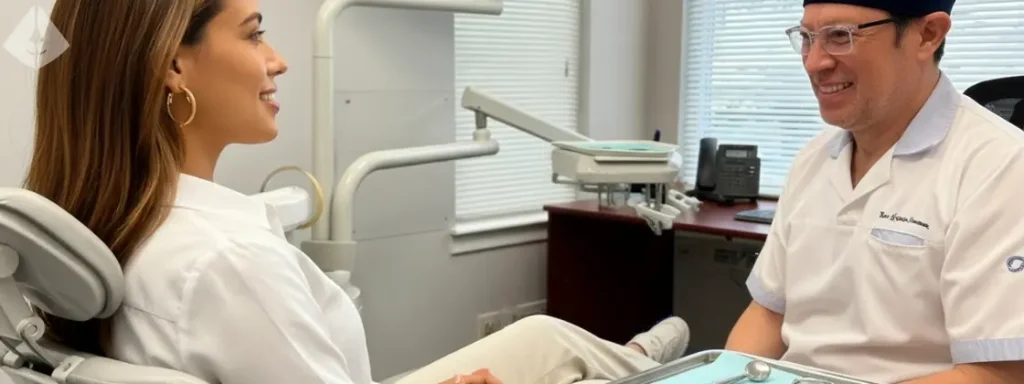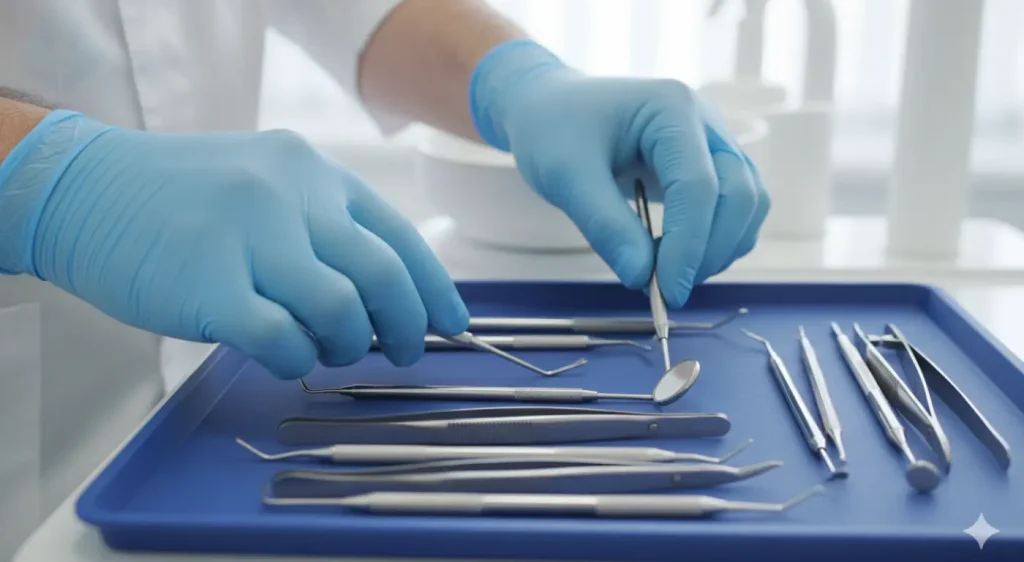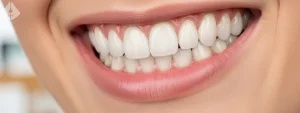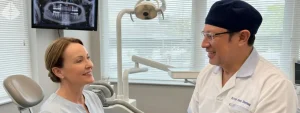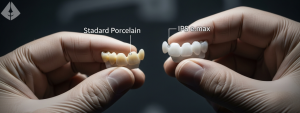A tooth extraction, whether a planned procedure or a necessary intervention for a wisdom tooth, certainly marks a significant step towards better oral health. However, for many patients, the focus quickly shifts from the procedure itself to the recovery period that follows. The questions are common: “How long will this take to heal?” and “How can I minimize the swelling and discomfort?” At the office of Dr. Aristo Carranza in Westfield, NJ, we believe that a successful procedure is defined by a smooth, swift, and comfortable recovery. For this reason, we have developed an advanced protocol for an accelerated tooth extraction recovery.
This guide goes far beyond the standard advice of simply applying ice. Instead, we empower our patients with a comprehensive strategy that integrates advanced nutrition, professional guidance, and lifestyle adjustments to actively promote faster healing. In fact, our philosophy, driven by the international expertise of Dr. Aristo Carranza, is that recovery isn’t something you passively wait for; it’s a process you can actively enhance.
Beyond the Basics: The Philosophy of Proactive Healing
While traditional post-operative instructions are crucial, they often focus solely on preventing complications. Consequently, our protocol is designed to be proactive. We aim to provide your body with the optimal tools and environment it needs to repair tissue, control inflammation, and rebuild strength efficiently. This approach not only reduces downtime but also significantly improves your comfort. In addition, by focusing on the why behind each recommendation, we make you an active partner in your own healing journey.
The First 48 Hours: Your Foundation for a Swift Recovery
The initial two days post-extraction are undeniably the most critical for setting the stage for healing. During this time, your body’s primary goal is to form a stable blood clot in the empty socket. This clot is the natural bandage that protects the underlying bone and nerve endings; therefore, making its preservation your top priority.
Gauze and Pressure: Immediately following the procedure, you will be biting down on sterile gauze. It’s important to maintain firm, consistent pressure for at least 30-60 minutes, as this helps stop the bleeding and encourages clot formation. If bleeding persists, simply replace the gauze and continue the pressure.
Ice Packs for Inflammation: This is the one piece of “basic” advice that remains essential. Specifically, for the first 24-48 hours, apply a cold pack to the outside of your cheek for 20 minutes on, then 20 minutes off. This constricts blood vessels, which is incredibly effective at minimizing swelling and bruising.
Rest is Mandatory: First and foremost, do not underestimate the power of rest. Avoid any strenuous activity, including exercise, heavy lifting, or bending over. This is because physical exertion increases blood pressure and can dislodge the crucial blood clot, leading to a painful condition known as dry socket.
Avoid Negative Pressure: Finally, for the first few days, do not use a straw, spit forcefully, or smoke. These actions create suction in the mouth, which is a primary cause of clot dislodgement.
Advanced Nutritional Strategy: Fueling Your Body to Heal
What you eat after your surgery has a direct impact on your recovery speed. Indeed, your body needs specific nutrients to repair tissues and fight off potential infections. Our nutritional protocol for accelerated tooth extraction recovery focuses on providing these building blocks in a soft, easy-to-consume format.
The Role of Vitamins A and C
These two vitamins are powerhouses for healing. Specifically, Vitamin C is essential for the synthesis of collagen, the protein that forms the foundation of your skin, gums, and other connective tissues. A strong collagen matrix ultimately means faster and more robust wound closure. Furthermore, Vitamin A supports the immune system and plays a vital role in epithelial cell growth, which is critical for the initial stages of gum tissue repair.
Healing Foods Rich in Vitamins A & C:
Smoothies with mango, papaya, and a handful of spinach
Mashed sweet potatoes (excellent source of Vitamin A)
Blended soups like tomato or butternut squash
Avocado or guacamole
The Power of Protein and Healthy Fats
Protein is the fundamental building block for tissue repair. For this reason, ensuring an adequate intake is non-negotiable for fast healing. In addition, healthy fats, particularly omega-3s, have anti-inflammatory properties.
Soft, Protein-Packed Options:
Greek yogurt or cottage cheese
Scrambled eggs
Protein shakes (remember, do not use a straw; consume with a spoon)
Well-cooked, flaked fish like salmon
Hummus or other bean dips
Guided Support for Inflammation Management: A Professional Approach
While a nutrient-rich diet provides the essential foundation for healing, we also recognize that managing the body’s natural inflammatory response is key to patient comfort. A controlled level of inflammation is a necessary part of healing, but excessive swelling can certainly lead to discomfort and a prolonged recovery.
As part of our commitment to comprehensive post-operative care, Dr. Aristo Carranza may discuss a personalized plan to help support your body’s healing process. Of course, this is tailored specifically to your individual health profile and the nature of your procedure. Any recommendations are made with the utmost professional discretion and are based on clinical evidence to ensure your safety and promote an optimal outcome.
It is critical to understand that self-prescribing supplements or medications after surgery can be dangerous and may interfere with the healing process or prescribed medications. Therefore, we strongly advise against using any product without explicit guidance from your surgeon. Our protocol is built on a foundation of safety, expertise, and personalized care.
Optimizing Your Environment for Healing
How you position your body and manage your daily activities plays a surprisingly large role in managing swelling and promoting an accelerated tooth extraction recovery. For instance, consider the following key areas:
The Importance of Your Sleeping Position
For the first few nights, it is absolutely critical to sleep with your head elevated. Use two or three pillows to prop up your head and upper back. This simple adjustment uses gravity to your advantage. Essentially, by keeping your head above your heart, you reduce the amount of blood pressure at the extraction site, which directly minimizes throbbing, bleeding, and the accumulation of fluid (swelling) overnight. As a result, waking up with less swelling means a more comfortable day ahead.
Managing Physical Activity
We already mentioned avoiding strenuous activity for the first 48 hours. However, this advice extends further. We generally recommend avoiding vigorous exercise for at least 5-7 days after an extraction. This is because an elevated heart rate can cause renewed bleeding and throbbing at the surgical site. Ultimately, listen to your body and reintroduce activity slowly. While a gentle walk is fine after a couple of days, contact sports, running, and heavy weightlifting should wait until you are fully cleared by Dr. Carranza.
Post-Operative Recovery Checklist
| Timeline | Key Actions & Focus | Foods & Supplements |
| Day 1-2 | Peak Inflammation Control: Rest completely. Use ice packs (20 min on/off). Keep head elevated at all times. Protect the blood clot (no straws, no spitting). | Liquids & Soft Foods: Smoothies, broths, yogurt, protein shakes (with a spoon). Focus on hydration (water). |
| Day 3-5 | Tissue Repair Phase: Swelling should begin to subside. Transition from ice to moist heat to soothe jaw muscles. Continue with gentle oral hygiene (saltwater rinses). | Soft, Nutrient-Dense Foods: Scrambled eggs, mashed potatoes, oatmeal, avocado. Ensure high intake of Vitamins A & C. |
| Day 6-10 | Returning to Normalcy: Continue to monitor the site. Reintroduce more solid foods as comfort allows. Gradually resume light physical activity. | Semi-Solid Foods: Well-cooked pasta, flaked fish, soft-cooked vegetables. Continue a balanced, vitamin-rich diet. |
When to Call Us: Your Peace of Mind is Our Priority
A successful recovery is an uneventful one. Of course, some swelling, mild discomfort, and minor bleeding are normal. However, certain signs warrant an immediate call to our Westfield office. We want to hear from you if you experience:
Severe or increasing pain not managed by prescribed medication.
Bleeding that is heavy or does not stop after applying pressure for an hour.
Swelling that worsens after the third day.
Fever, chills, or a foul taste/odor from the extraction site.
Suspicion of a dislodged blood clot (sudden onset of intense pain).
Your health and safety are our paramount concern. Above all, remember there is no such thing as a “silly question” during your recovery.
Your Partner in Health, From Procedure to Full Recovery
Achieving an accelerated tooth extraction recovery is a collaborative effort. While Dr. Aristo Carranza brings world-class surgical skill to the procedure, your proactive involvement in the post-operative phase is what ensures an optimal outcome.
By adopting this advanced protocol—that is, by fueling your body with healing nutrients, professionally managing inflammation, and creating the right environment for rest—you are taking control of your recovery. Indeed, this commitment to comprehensive patient care is the standard at our practice. We are dedicated to supporting you at every step, ensuring your journey back to full health is as fast and comfortable as possible.
Therefore, if you are considering a tooth extraction or any other cosmetic or general dentistry procedure, contact our office in Westfield, NJ, today. Let us show you how our patient-first approach makes all the difference. Visit us at drcarranza.com to schedule your consultation.
